How to Brew your Tea?
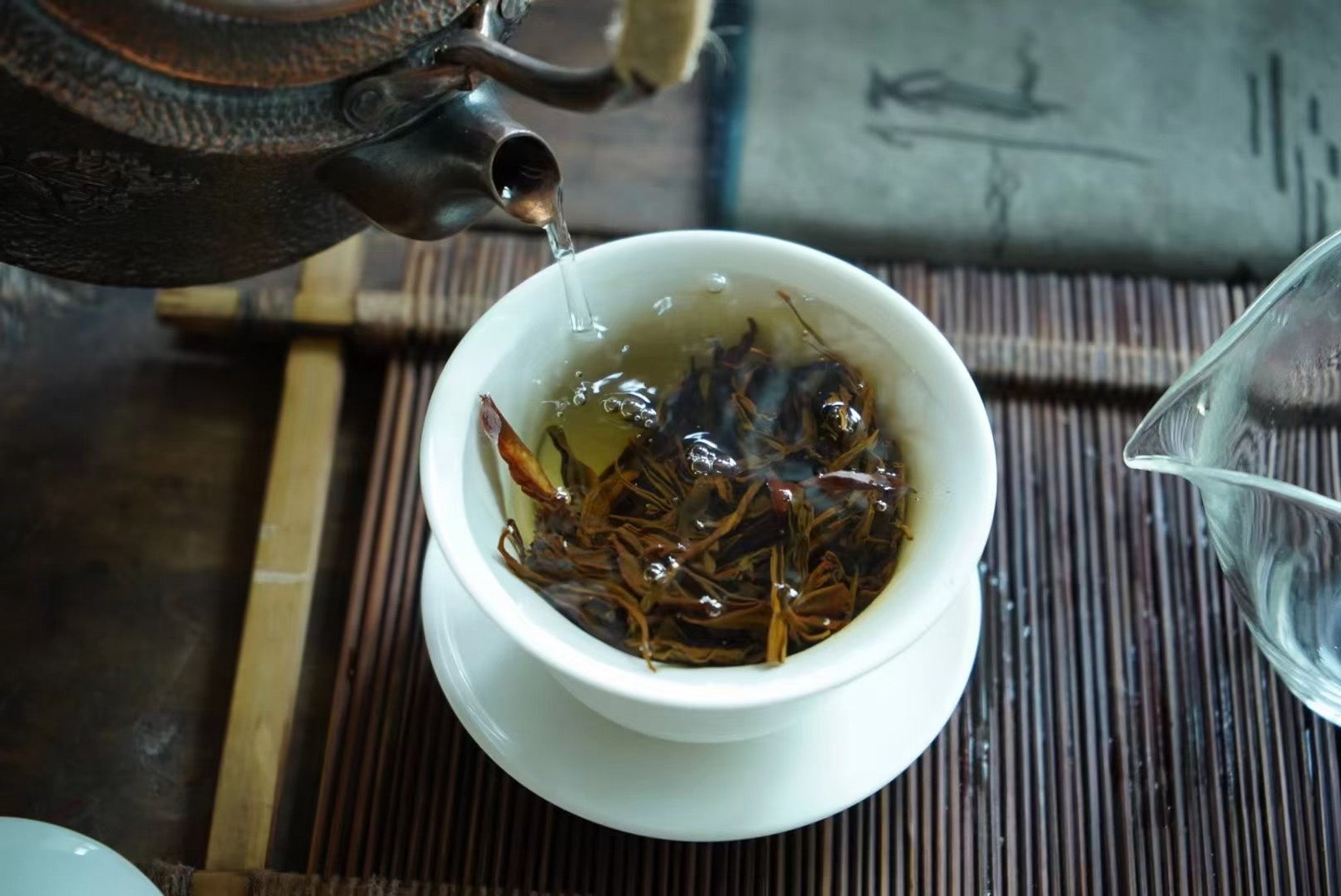
Making a perfect cup of tea
After purchasing your favorite tea, the anticipation of brewing a satisfying pot may be overwhelming. Whether you are seeking a moment of tranquility or desiring to share it with loved ones, there are certain brewing techniques that are essential for a great cup of tea. It's important to understand that the way in which you brew your tea, as well as your mindset at the time, directly influences the quality of the tea.
When brewing tea, it's crucial to approach the process with a sense of calmness and focus. By being quiet and mindful, and maintaining a relaxed demeanor, you can enhance the overall experience of brewing and enjoying your tea. Pay attention to the tea leaves, the water temperature, and the brewing time, as these factors play a critical role in the flavor and aroma of the tea. The right combination of tea leaves, water temperature, and brewing time will ultimately determine the quality of your tea.
Whether you choose to indulge in a solitary moment of tea appreciation or gather with friends for a tea party, the art of brewing tea demands attention to detail and a willingness to savor the moment. By approaching tea brewing with the proper mindset and technique, you can elevate the sensory experience and fully appreciate the tea's unique flavors and aromas.
1- The Choice of Tea Set
The choice of vessel material for brewing tea is crucial to the overall tea-drinking experience. Different types of tea require different vessel materials in order to fully bring out their respective flavors and aromas. For example, floral teas and green teas are best brewed in glass material teapots. Not only are glass teapots aesthetically pleasing, but they also allow for the visual enjoyment of watching the tea leaves float and dance as they steep.
On the other hand, Oolong tea is best brewed in a purple clay teapot. The dense airflow orifices in the clay pot allow for excellent air permeability, ensuring that the aroma of the Oolong tea is well gathered and retained within the pot. This results in a more flavorful and mellow tea soup. Additionally, the material of the clay itself plays a crucial role in enhancing the overall aroma and taste of the tea, making it the perfect match for Oolong tea.
Porcelain teapots from Jingdezhen, China, are considered the highest quality and are suitable for brewing a wide variety of teas. The material of the porcelain allows for the pure flavor of the tea leaves to be presented as it is, without altering or diminishing it in any way. This makes porcelain teapots a versatile choice that can be used for brewing different types of tea.
Mugs are undoubtedly the most convenient tea utensils for us to enjoy this beloved beverage. With their wide availability and simplicity, mugs offer a practical solution for enjoying tea anywhere and at any time.
The beauty of mugs lies in their accessibility -- they are easily found in most households, offices, and restaurants. This widespread availability makes them an ideal vessel for brewing and savoring, tea. Whether you are at home, in the office, or at a friend's house, you can readily locate a mug and prepare your preferred blend of tea.
Moreover, mugs are versatile enough to accommodate various types of tea. Whether using triangle tea bags or loose tea leaves, mugs are capable of brewing a delightful cup of tea. With the addition of a simple tea filtering mechanism, mugs become even more accommodating for all tea preferences.
Time, place, and environment can present challenges when it comes to finding the perfect tea set. In these instances, mugs provide a practical and fuss-free alternative for enjoying a soothing cup of tea. Their versatility and widespread availability make them a reliable choice for tea enthusiasts.
The choice of vessel material for brewing tea is an important consideration, as it can greatly impact the overall tea-drinking experience. Whether it's a glass teapot for visual enjoyment, a purple clay teapot for Oolong tea, or a porcelain teapot for versatility, the right vessel material can elevate the enjoyment of tea to new heights.
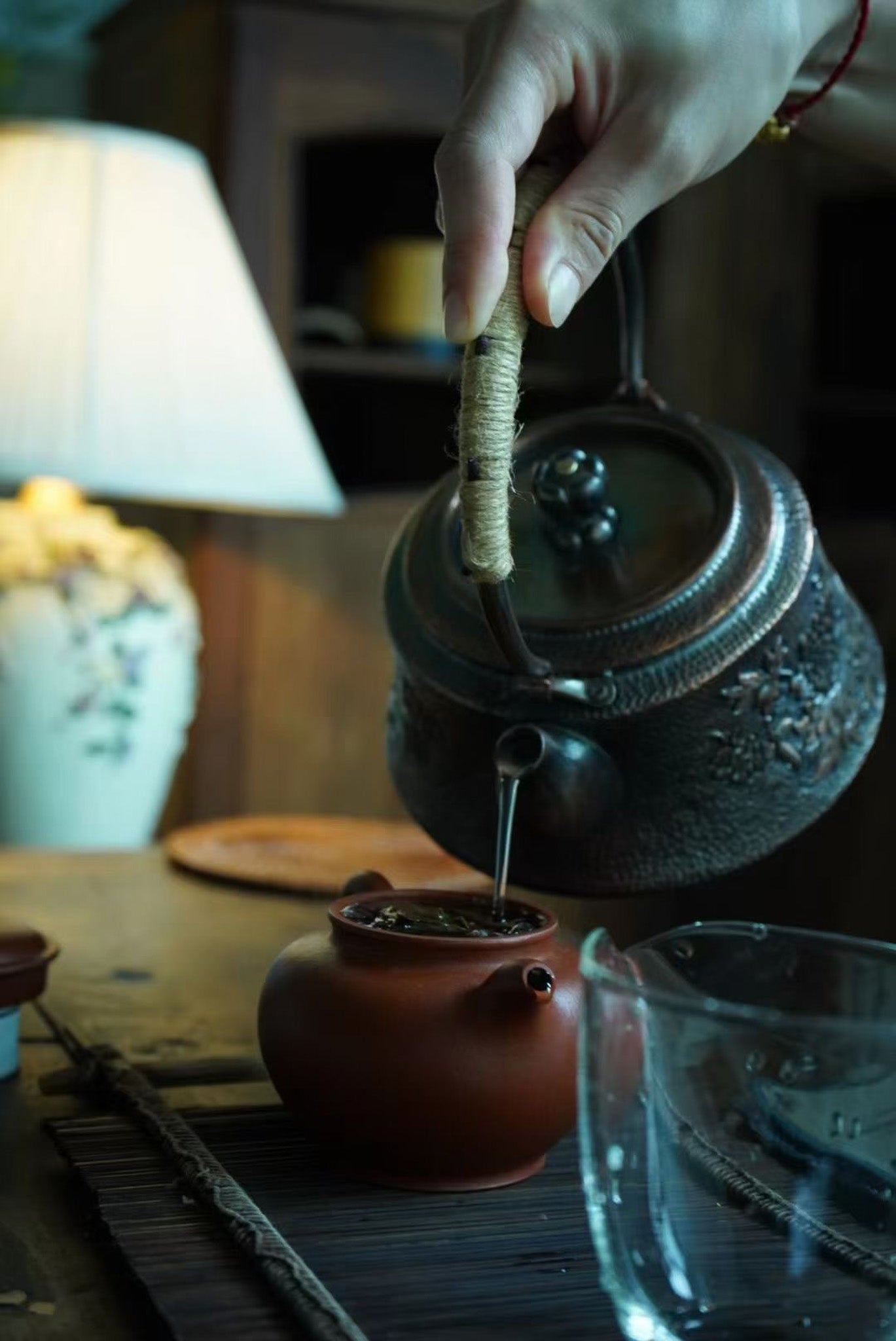
2- The Choice of Water
Water is often taken for granted as a simple, essential part of life. However, when it comes to brewing a perfect pot of tea, the quality of water becomes a critical factor. As the famous quote goes, "Water is important like mother and tea utensil is important like father." The water used in the tea-making process can greatly affect the taste and aroma of the final product.
In ancient times, during the Tang Dynasty, tea connoisseurs recognized the importance of using high-quality water for brewing tea. In his book "Tea Classic," Lu Yu emphasized the importance of clear, alive water with a light body and a sweet flavor. This type of water was believed to enhance the overall experience of drinking tea, giving it a sense of coolness and purity.
It is not just a matter of hygiene or cleanliness; the composition and quality of water can affect the chemical reactions that take place during the tea brewing process. Tap water may contain chemicals, minerals, or impurities that can alter the taste of the tea. Mountain spring water, on the other hand, is often preferred for its natural purity and balanced mineral content.
Purified Water is also a good choice for brewing tea. With the advancement of modern science, it is possible to transform ordinary tap water into pure water without impurities and to neutralize the water's acidity and alkalinity. Brewing tea with this kind of water not only results in good purity and high transparency, but also brews a clear and transparent tea soup with a rich aroma and flavor, no off-flavors, and a refreshing and delicious taste. There are many brands of pure water available on the market, most of which are suitable for brewing tea.
- CLEAR WATER QUALITY MEANS NO IMPURITIES, NO TURBIDITY, AND TRANSPARENT COLOUR. Clear water quality means no impurities, no turbidity, and transparent color.
The source of water plays a significant role in its quality and vitality. Water that flows, such as from a mountain spring or river, is considered alive because it is constantly moving and is not stagnant like water found in a well. Scientific evidence supports the idea that flowing water is less likely to harbor bacteria and other harmful pathogens. Furthermore, living water is naturally purified with a higher content of essential gases like oxygen and carbon dioxide. This results in water that is fresher and more refreshing. For example, mountain spring water, sourced from the natural flow of the earth, is considered to be of superior quality. It is often prized for its purity and taste. In contrast, well water, which is static and may be prone to contamination from surrounding soil and pollutants, is considered less desirable.
- WATER "BODY" SHOULD BE LIGHT
The composition of water, including its mineral content, taste, and temperature, greatly impacts its suitability for various purposes. The calcium and magnesium ion concentration in water determines whether it is classified as 'soft' or 'hard.' Soft water contains less than 8mg of calcium and magnesium per liter of water, while hard water contains more than 8 mg of calcium and magnesium. Hard water, typical of tap water, often contains high levels of chlorine and fluoride. In contrast, mountain spring water, known for its sweet and refreshing taste, is preferred for drinking due to its purity and mineral content. The coldness of mountain spring water, originating from deep, unpolluted sources, makes it ideal for preparing tea and producing a much purer tea soup. When comparing tea water, mountain spring water is preferred over mineral water, purified water, and tap water due to its superior taste and quality. Thus, the mineral composition, taste, and temperature of water are essential factors to consider when selecting water for consumption and various applications. Comparison of tea water: spring water> purified water> mineral water > tap water.
- CHEMICAL INDICATORS
The pH is 6.5~8.5. The color of tea soup is quite sensitive to pH. When the pH drops to below 6, the water becomes significantly acidic and the color of the soup becomes lighter; when the pH is above 7.5 and becomes alkaline, the tea soup turns black.
If you don't have access to bottled mountain spring water or purified water at home, tap water can be a suitable alternative for various uses, including drinking and brewing tea. However, it is important to consider certain precautions when using tap water, in order to ensure its safety and quality.
One suggested method to improve the quality of tap water is to boil it before consumption. Boiling tap water can help to eliminate harmful bacteria and other impurities that may be present, thus making it safer for consumption. Additionally, boiling water can help to improve its taste, removing any unpleasant odors or flavors that may be present.
However, it is important to note that continuously boiling tap water in a kettle is not recommended. This is because the oxygen content in the water will gradually decrease, leading to the formation of white impurities. When brewing tea or using the water for other purposes, this can result in a flat and less delicate flavor, affecting the overall quality of the beverage.
3- The Choice of Tea Leaves
Brewing loose tea offers several distinct advantages over using triangular tea bags. While triangular tea bags are indeed very convenient, allowing for simple brewing without the need for specialized skills, they are limited in the number of times they can be brewed. The flavor of the tea often becomes flat after just one or two brews, providing a less satisfying experience for tea enthusiasts.
Triangular tea bags typically contain just enough tea for one person, limiting their versatility and practicality. In recent years, whole leaf tea bags have gained popularity, but the quality of these products is still a matter of debate when compared with loose tea.
Brewing loose tea requires a bit more skill than using triangular tea bags, but it offers a more immersive and traditional approach to the tea-making process. This method allows for a deeper understanding of tea and its brewing techniques, providing a moment of peace and quiet in the process. With each practice session, individuals can refine their brewing skills and deepen their knowledge of tea.
Ultimately, brewing loose tea allows for a more authentic and rewarding tea-drinking experience, as it provides the opportunity to fully appreciate the natural flavors and aromas of the tea. By following the instructions on the product package and ensuring the right proportion of tea leaves and water, individuals can achieve a truly satisfying cup of tea.
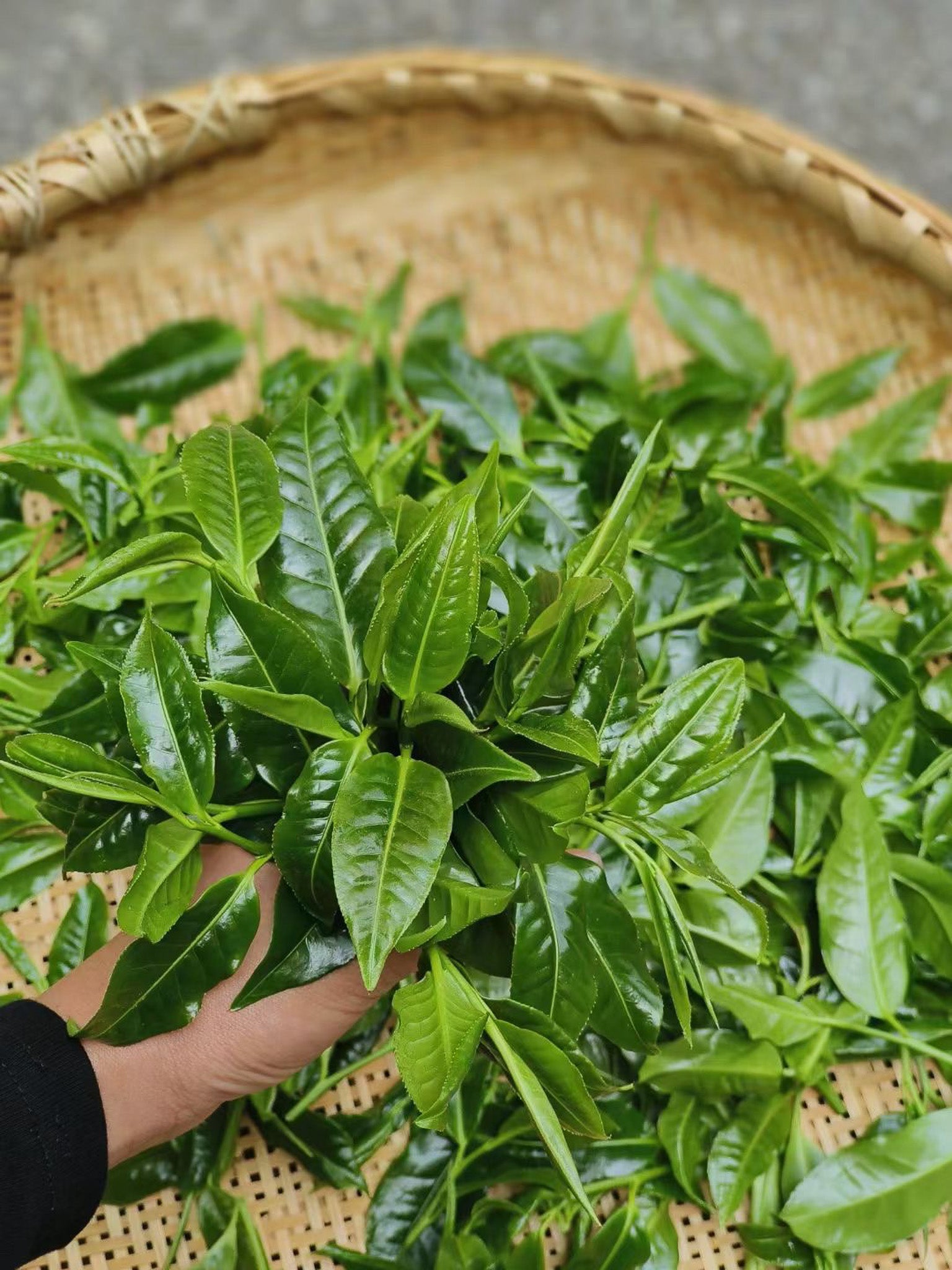
4- The Control of Water Temperature
Tea is a diverse and complex beverage that comes in many varieties, each with its own unique flavor profile and brewing requirements. From delicate white teas to robust black teas, the tenderness of the tea leaves determines the water temperature needed to bring out the best flavors.
For example, green tea is best brewed with water temperatures between 80-85°C to preserve its delicate flavors and prevent bitterness. On the other hand, oolong and black teas benefit from higher temperatures of around 85-100°C to fully extract their bold and robust flavors.
To achieve the optimal water temperature for your specific type of tea, it is highly recommended to invest in a kettle with a temperature display. This will allow you to accurately control the temperature and minimize the risk of improper water temperature causing the tea to taste bad. However, if you have already purchased a kettle without a temperature display, there is a simple solution. If your tea does not require boiling water, you can pour out the boiled water and set it aside to cool down before brewing the tea. This way, you can ensure that the overheated water does not jeopardize the quality of the tea.
5- Water pouring methods
High Flush, Low Flush, Low Flow...
Water pouring in tea brewing can greatly impact the flavor and aroma of the final product. There are three main methods of water pouring: high flush, low flush, and low flow. Each method has its own unique benefits and can result in different tasting teas.
High flush pouring refers to the method where hot water is poured into the tea leaves in a quick and forceful manner, causing the water to rise up and fall onto the leaves. This method allows for the water to come into contact with a large surface area of the tea leaves, stimulating the aroma and flavor. The forceful nature of high flush pouring also allows for the tea leaves to absorb the water quickly, resulting in a faster brewing process.
For example high flush: Taiwan Sunrise Charcoal Baked Oolong tea, and Raw puerh Tea Cake.
Conversely, low flush pouring involves using a slower and more controlled flow of water onto the tea leaves, resulting in a more delicate and subtle flavor. This method is often used for more delicate teas, such as our white tea, green tea and black tea, where a gentle brewing process is desired.
Finally, low flow pouring involves slowly and gently pouring the hot water onto the tea leaves. This method allows for the water to evenly penetrate the leaves, resulting in a more balanced, and smooth flavor. The slower pouring also ensures that the water temperature remains more consistent, resulting in a more controlled brewing process.
For example low flow: Cooked Puerh tea Gold Balls.
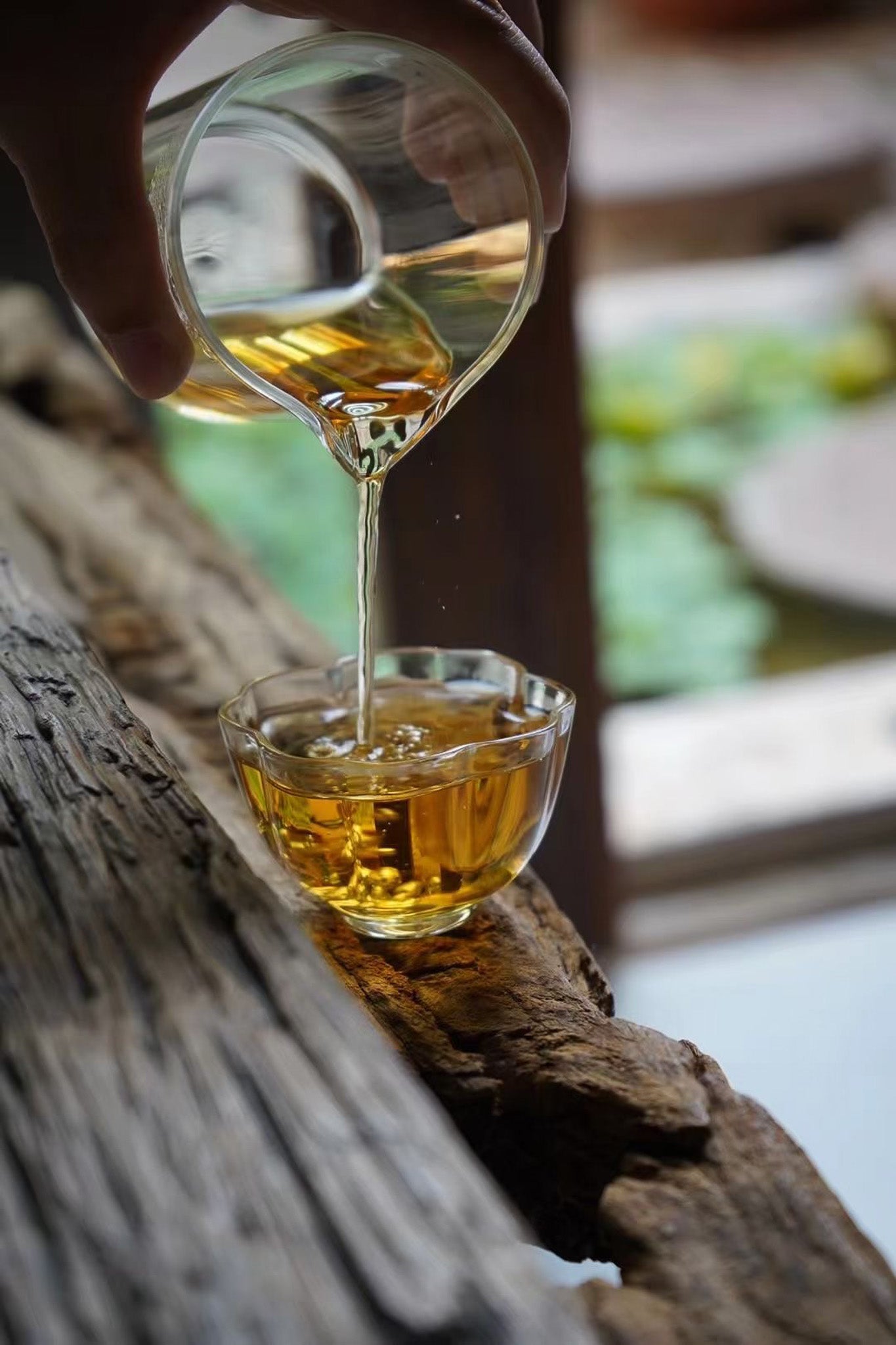
Simple steps for making a perfect cup of tea
1/ To choose the good tea leaves and prepare the correct weight of tea leaves. For example, use a ratio 1g:50ml (tea leaves to water).
- Some may argue that any tea leaves will do, but selecting the right type of tea leaves is essential for achieving the perfect cup of tea.
- It is important to consider the quality and freshness of the tea leaves, as well as the specific type of tea being brewed.
- Preparation of the correct weight of tea leaves is also crucial, as using too much or too little can greatly impact the flavor and strength of the tea.
- By carefully measuring the ratio of tea leaves to water, such as the standard 1g to 50ml ratio. This ensure a consistently satisfying cup of tea.
2/ To choose the appropriate tea utensils with the tea category.
- Choosing the appropriate ones for the specific type of tea being brewed can enhance the overall tea experience.
- Considering the shape and material of the teapot, teacups, and other utensils can contribute to a better infusion and extraction of flavors from the tea leaves.
- Using the right utensils can also help to maintain the temperature and aroma of the tea, providing a more authentic and enjoyable tea-drinking experience.
3/ To choose good water and control the temperature of the boiling water.
- While some may think that any water will do, the quality of the water and the control of the boiling temperature are important factors in brewing the perfect cup of tea.
- The type of water used, whether it be filtered, spring, or mineral, can affect the taste and aroma of the tea.
- Controlling the temperature of the boiling water is also crucial, as different types of tea require different brewing temperatures for optimal results.
4/ Heat up the tea utensils with hot water, mainly to maintain the temperature of the tea utensils and for hygiene purposes.
- It may seem unnecessary to heat up the tea utensils, but doing so can help to maintain the temperature of the tea and ensure a more consistent and enjoyable tea taste experience.
- Heating up the utensils can also help to eliminate any potential bacteria or impurities, contributing to better hygiene and overall tea quality.
5/ Put tea leaves in tea pot or Gaiwan.
- One may argue that simply adding tea leaves to a cup is sufficient, but using a proper tea pot or Gaiwan can enhance the brewing process.
- Placing the tea leaves in the appropriate vessel can allow for better infusion and extraction of flavors, resulting in a more flavorful and aromatic cup of tea.
6/ Gently shaking the teapot or Gaiwan is an important step in the tea brewing process. This action helps to ensure that all tea leaves are evenly distributed, allowing for a balanced infusion of flavor. By taking the time to gently shake the teapot or Gaiwan, tea enthusiasts can enhance the overall quality of their tea by preventing the leaves from clumping together or settling in one area.
7/ Each type of tea leaf has its own specific brewing requirements based on its tenderness and flavor profile. High flush, low flush, and low flow brewing techniques, as well as variations in pouring methods, can greatly impact the final taste of the tea. It is essential for tea connoisseurs to understand and control the brewing time and method for each type of tea in order to unlock its full potential and achieve the desired flavor.
8/ When serving brewed tea to others, it is important to pour it into a sharing cup with a low flow in order to maintain the best flavor before distributing it into individual small tea cups. This method allows the tea to be evenly distributed among the small cups, ensuring that each person enjoys the same quality and taste of the tea.
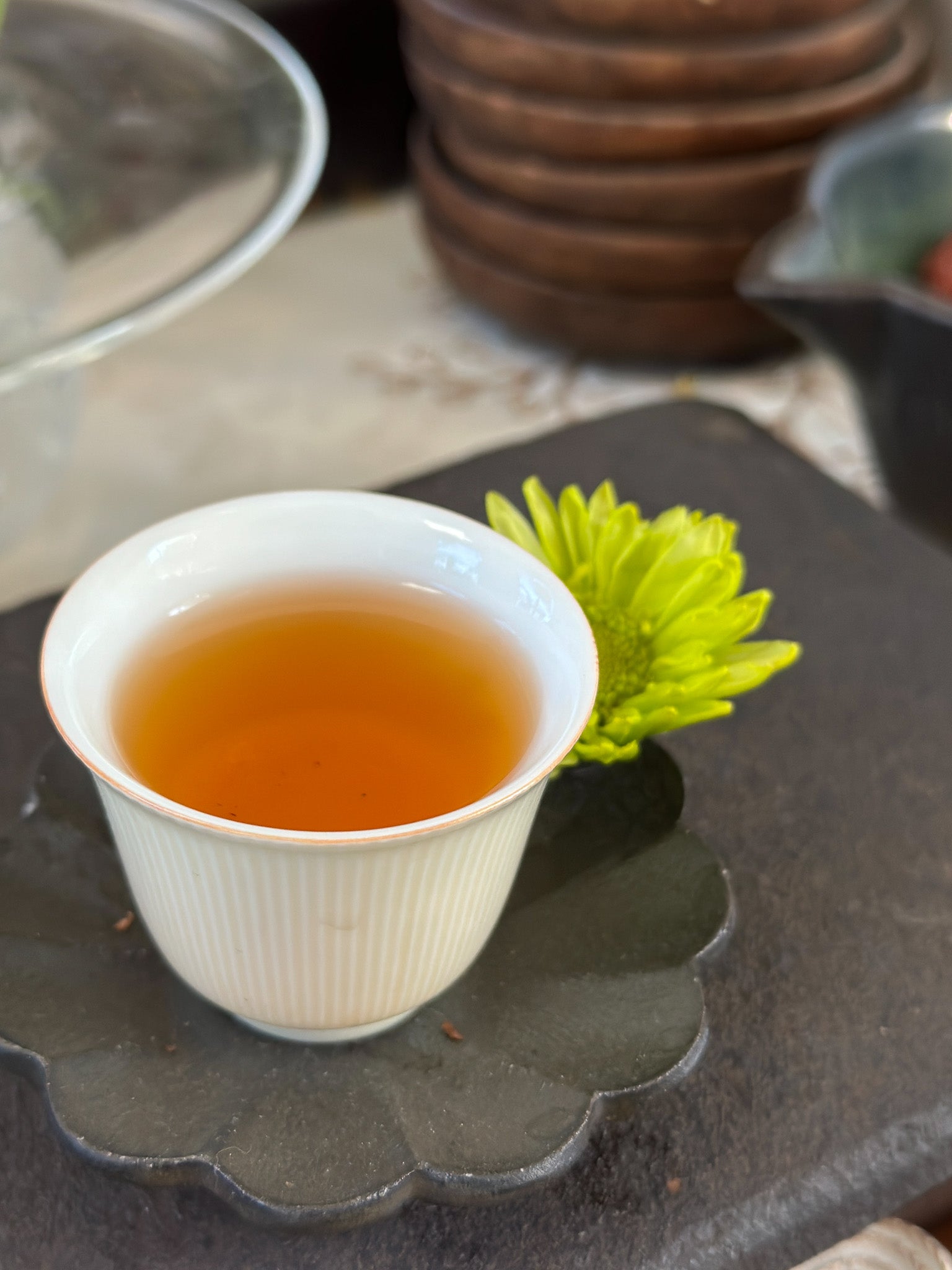
Additional Remarks on Brewing Tea
- When brewing tea, there are several key points to consider in order to ensure the best flavor and health benefits. Firstly, it is important to note that leaving a handful of tea leaves to brew for the whole day can result in a lack of full flavor. The flavor compounds in tea leaves are released at different times during the brewing process, so steeping for too long can result in a bitter or over-extracted taste. Additionally, the number of times the tea leaves are brewed can also affect the flavor. Reusing tea leaves multiple times can result in a weaker and less flavorful brew.
Furthermore, the temperature at which the tea is brewed is crucial. Allowing the tea leaves to sit in hot water for an extended period of time can lead to oxidation, which can degrade the health benefits of the tea. Vitamins, tea polyphenols, flavonoids, and other nutrients in tea are susceptible to degradation when exposed to high temperatures for too long. Therefore, it is important to pay attention to the right temperature and brewing time to maximize the health benefits of the tea.
- Aged teas such as Oolong and Puerh are renowned for their complex flavors and strong aromas, which only improve with time. However, there is a common practice in the tea-drinking world that may seem counterintuitive to those unfamiliar with these varieties: the idea of not washing aged tea before steeping.
The process of washing aged tea involves quickly pouring boiling water over the leaves and then immediately discarding the brewed liquid, which is not for drinking. This initial rinse serves a dual purpose. Firstly, it removes any surface impurities or dust that may have settled on the leaves during storage, ensuring a cleaner and more pleasurable drinking experience. Secondly, it heats up the leaves and allows the initial aroma and flavor of the tea to start evaporating, enhancing the overall taste of the brew.
This practice is particularly important for aged teas, as they often accumulate more impurities and natural oils over time, which can impact the flavor if not properly rinsed. Additionally, the initial heat from the water jump-starts the process of releasing the nuanced and complex flavors that have developed within the aged leaves.
- Tea stain in a teapot is a common occurrence that can sometimes be overlooked, but it is important to understand the composition and potential implications of this phenomenon. The formation of tea stain is attributed to the oxidation of tea polyphenols found in tea leaves, as well as the interaction with metal elements present in the teapot. This process results in the creation of a metal chelate, which manifests as the unsightly brown or greenish residue inside the teapot. While there is limited scientific research on the exact health implications of tea stain, it is generally advisable to ensure that the teapot is clean and free from any residue.
Although there is no conclusive evidence to suggest that tea stain poses a significant health risk, it is recommended for reasons of hygiene to remove it from the teapot. This can be achieved through washing the teapot with soap and water or using substances such as toothpaste or salt water to effectively remove the tea stain. By maintaining a clean and stain-free teapot, one can ensure that their tea-drinking experience is not compromised and that potential hygiene concerns are mitigated. In conclusion, while the health implications of tea stain are not definitively understood, it is advisable to prioritize cleanliness and hygiene in the care of teapots and tea-related utensils.
- When it comes to brewing tea, the temperature of the water plays a critical role in determining the flavor and aroma of the final product. Many tea enthusiasts believe that using boiling water for every type of tea is the best approach, but this is not necessarily true. In fact, each type of tea has its own ideal water temperature for brewing, and using boiling water for all types of tea can actually result in a less than ideal taste.
For dark tea and oolong tea, using boiling water is recommended as it helps to extract the full flavor and aroma from the leaves. However, for more delicate teas such as green tea, the water temperature should be lower, around 85-90 degrees, to avoid destroying the polyphenols and losing the delicate aroma of the tea.
It is important to note that drinking tea while the tea soup is too hot is not recommended as it can affect the taste and aroma of the tea. Allowing the tea to cool down for a few minutes before drinking can help to enhance the overall drinking experience.
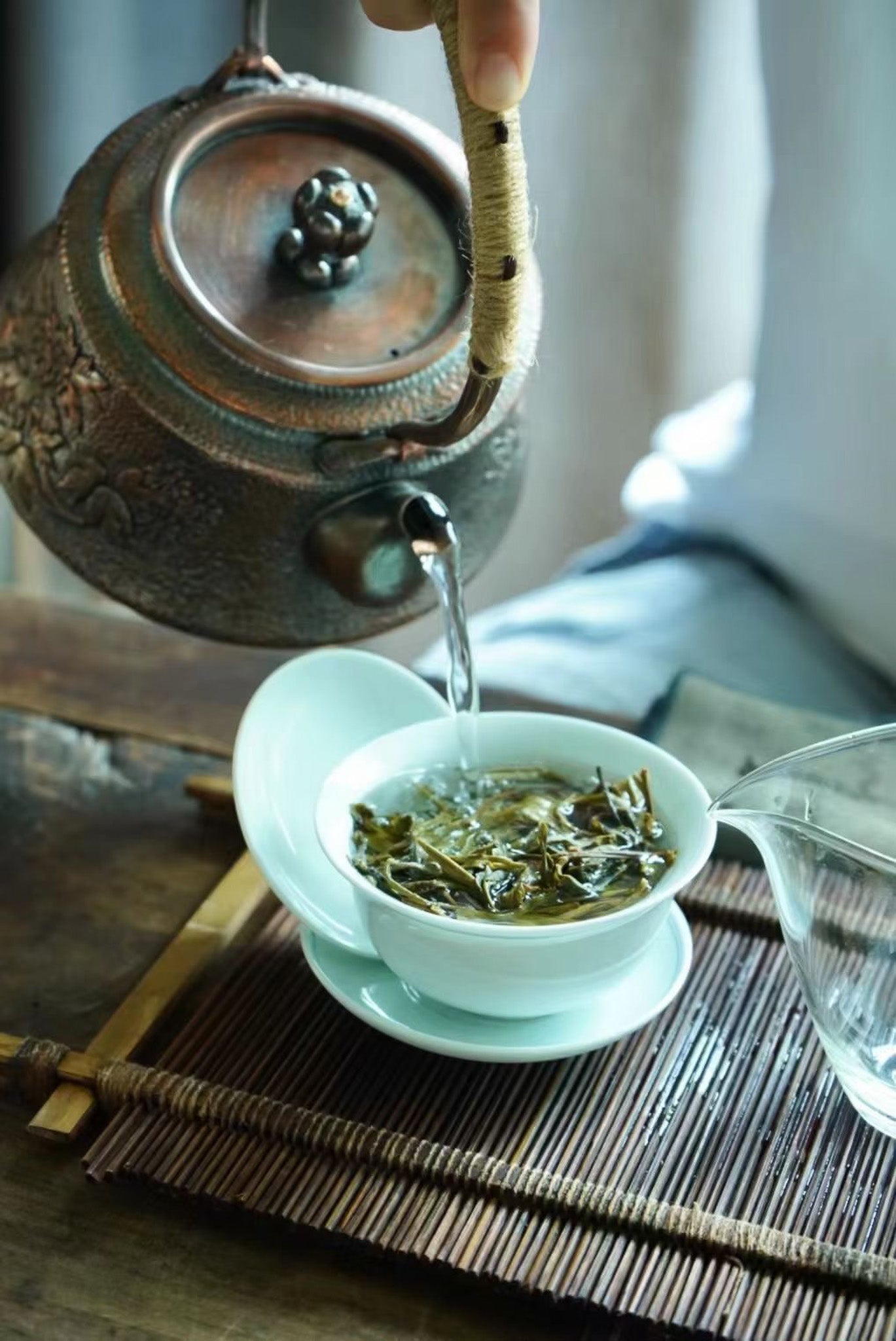
How to taste a good tea?
1- The colour of the tea soup
When evaluating the quality of a cup of tea, one of the key indicators to observe is the color of the tea broth. This can provide valuable insight into the brewing process and the overall quality of the tea leaves.
A high-quality tea broth should exhibit a bright, clear, and transparent appearance. The color should be rich and vibrant, indicating that the tea leaves have been steeped properly and have imparted their full flavor and aroma into the water. Cloudy or dull tea broth may indicate that the brewing process was not handled with care, resulting in a less than optimal cup of tea.
Professional tea drinkers are particularly adept at discerning the nuances of tea broth color, as it can provide crucial information about the brewing time and technique. The depth and intensity of the color can indicate whether the tea has been steeped for the appropriate amount of time, allowing the flavors to fully develop without becoming overly bitter or astringent.
2- The Smell of the Aroma
When you put your nose close to the edge of a tea cup and gently inhale, you are opening yourself up to a world of sensory delight. A good tea broth is like a ticket to the natural world, carrying with it the distinct aromas of where the tea tree was grown. Whether it be the floral notes of a high mountain oolong, the sweet fragrance of a black tea, or the grassy scent of a green tea, the aroma of the tea broth can transport you to the very place where the tea leaves were cultivated.
However, it is important to note that the aroma of tea does not just come from nature, but also from the different types of tea leaves and the techniques used in processing them. A skilled tea master can bring out a wide range of aromas from the same type of tea leaf, simply through the way they handle it during processing. On the other hand, bad tea will carry with it unpleasant odors such as mustiness, sourness, or even burnt smells. These undesirable aromas can be the result of poor tea processing or improper storage.
3- Tasting the tea soup
When tasting tea soup, it is an experience that goes beyond simply quenching one's thirst. The act of sipping and savoring tea is an art form, and it requires patience and mindfulness to fully appreciate the complex flavors and aromas.
As the tea touches your tongue, take a moment to let it unfold and gently move around in your mouth. Close your eyes and allow yourself to fully experience the flavors. The combination of taste and smell is key to fully appreciating the tea. By lowering your head, you can better savor the aroma of the tea broth.
After the initial sip, take a moment to let the flavors settle and linger in your mouth. With the second sip, hold the tea broth in your mouth and slowly stir it with the tip of your tongue. This allows you to fully engage all of your taste buds, from the astringent notes at the tip of your tongue to the bitter flavors at the back.
Lastly, allow yourself to swallow the tea slowly, and if you’re lucky, you may catch a whiff of the aroma as it escapes through your nose. By the third sip, you will find that the color, aroma, and flavor of the tea soup become more pronounced and enjoyable.
